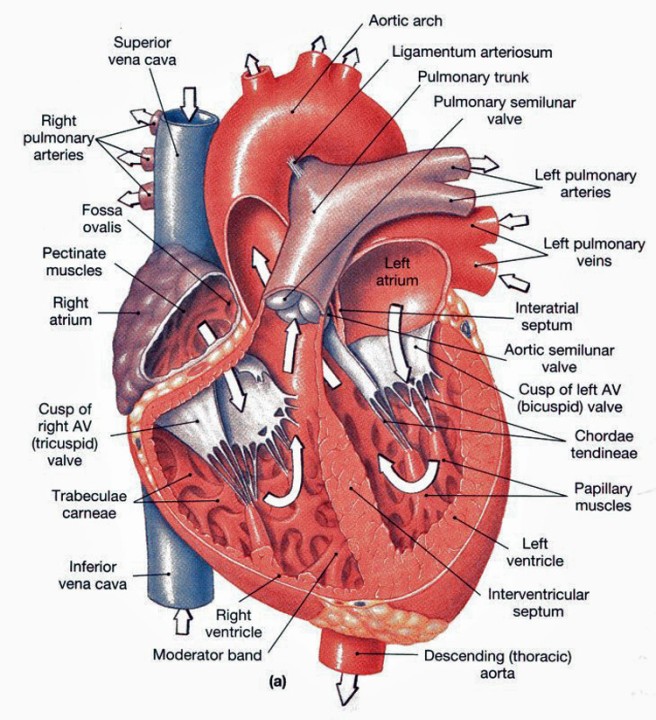
Heart anatomy
The heart is a muscular organ that pumps blood around the body by circulating it through the circulatory/vascular system. It is located in the middle mediastinum, wrapped in a two-layered serous sac called the pericardium. The heart is shaped like a four-sided pyramid and is oriented as if a pyramid had fallen on one of its sides with its base facing the posterior chest wall and its apex facing the anterior chest wall. The great vessels that arise from the heart radiate their branches to the head and neck, the chest and abdomen, and the upper and lower limbs.
The heart has a special position in the anatomical sciences. For example, you can live without your spleen or only one kidney, you can even regrow your liver, but you can't live without your heart.
The heart has five surfaces:
base (rear),
diaphragmatic (lower),
sternocostal (front),
left lung surfaces,
right lung surfaces.
It also has several margins: right, left, higher and lower:
• The right margin is the small portion of the right atrium that extends between the superior and inferior vena cava.
• The left margin is formed by the left ventricle and the left auricle.
• The upper border in the anterior view consists of both atria and their auricles.
• The lower edge is marked by the right ventricle.
Inside, the heart is divided into four heart chambers: two atria (right and left) and two ventricles (right and left).